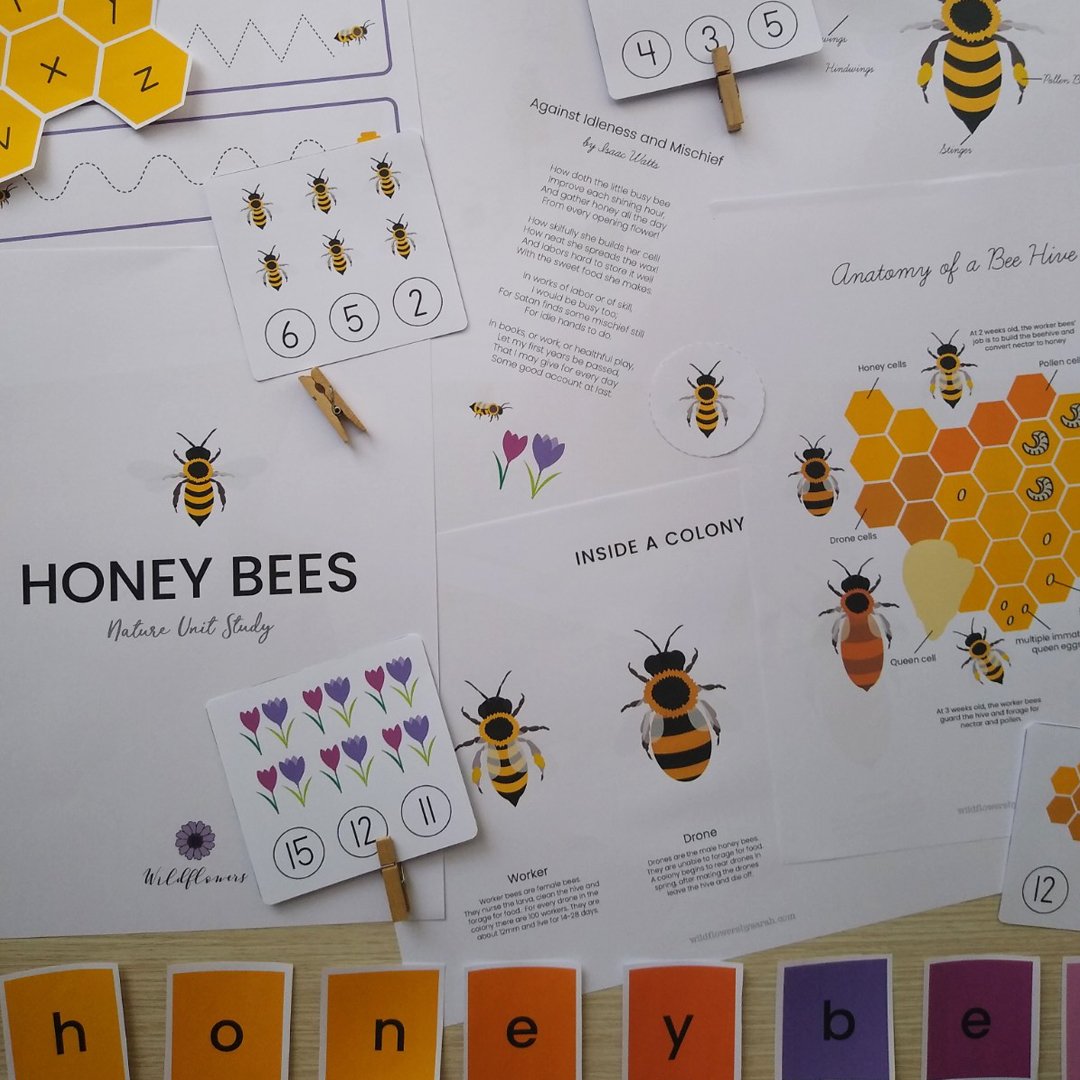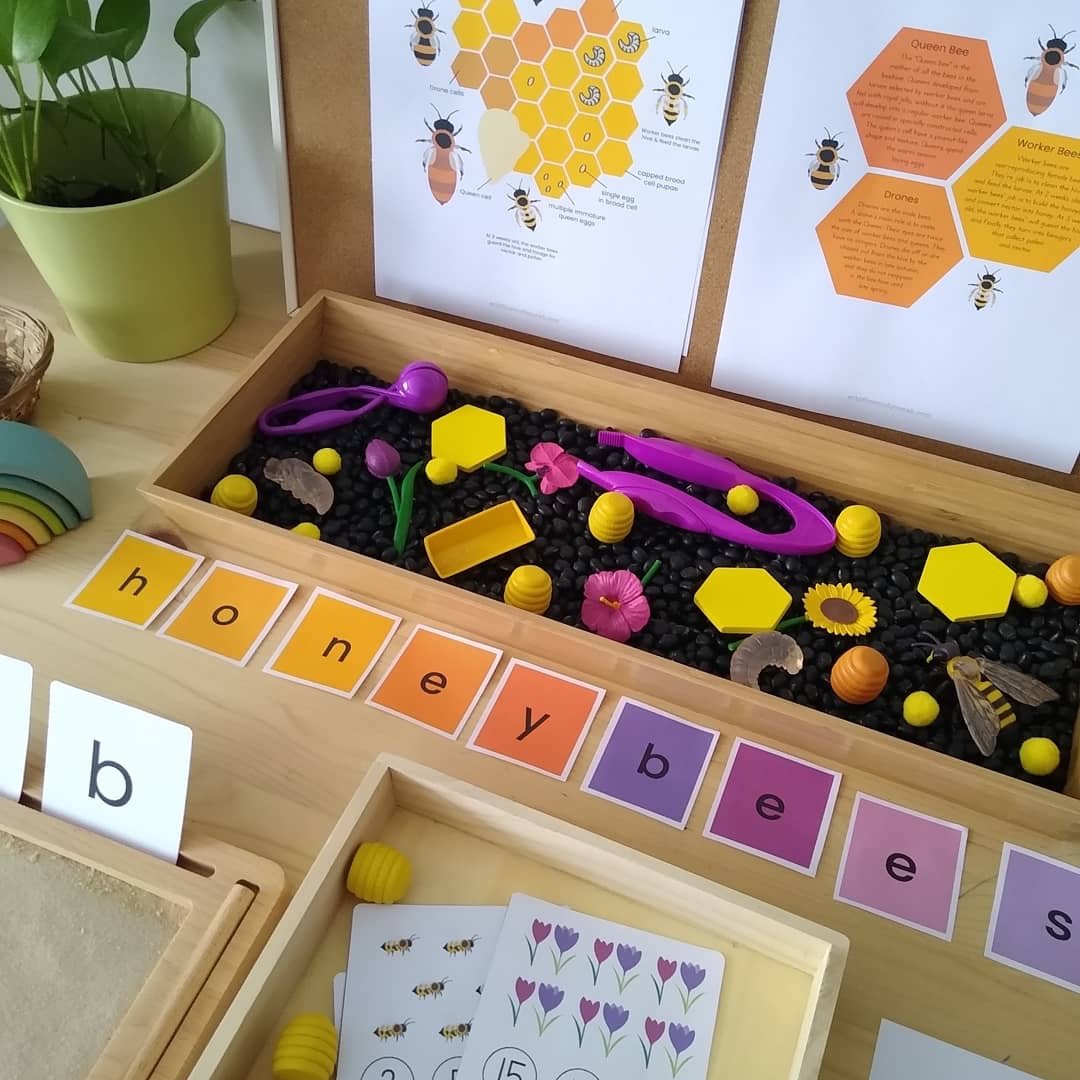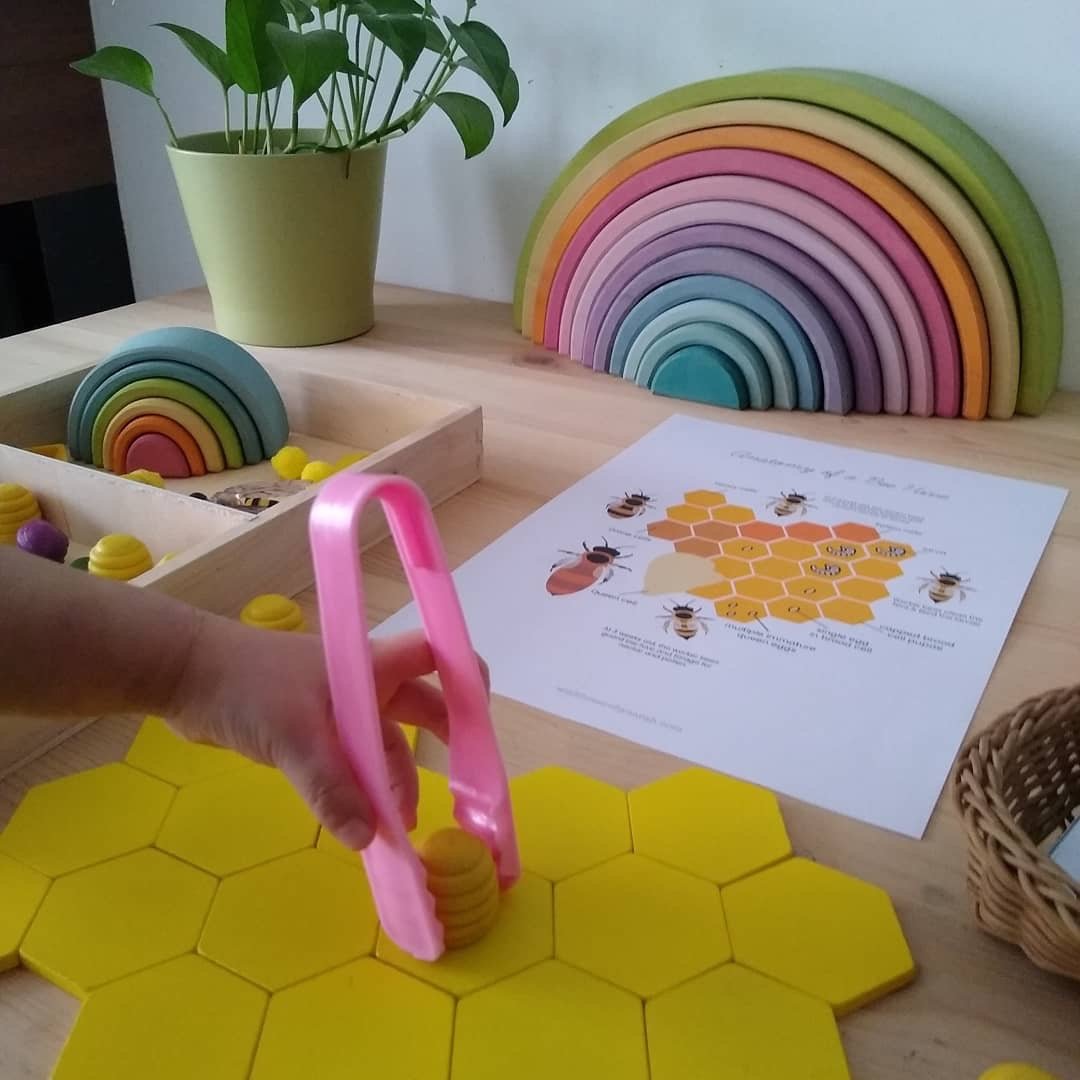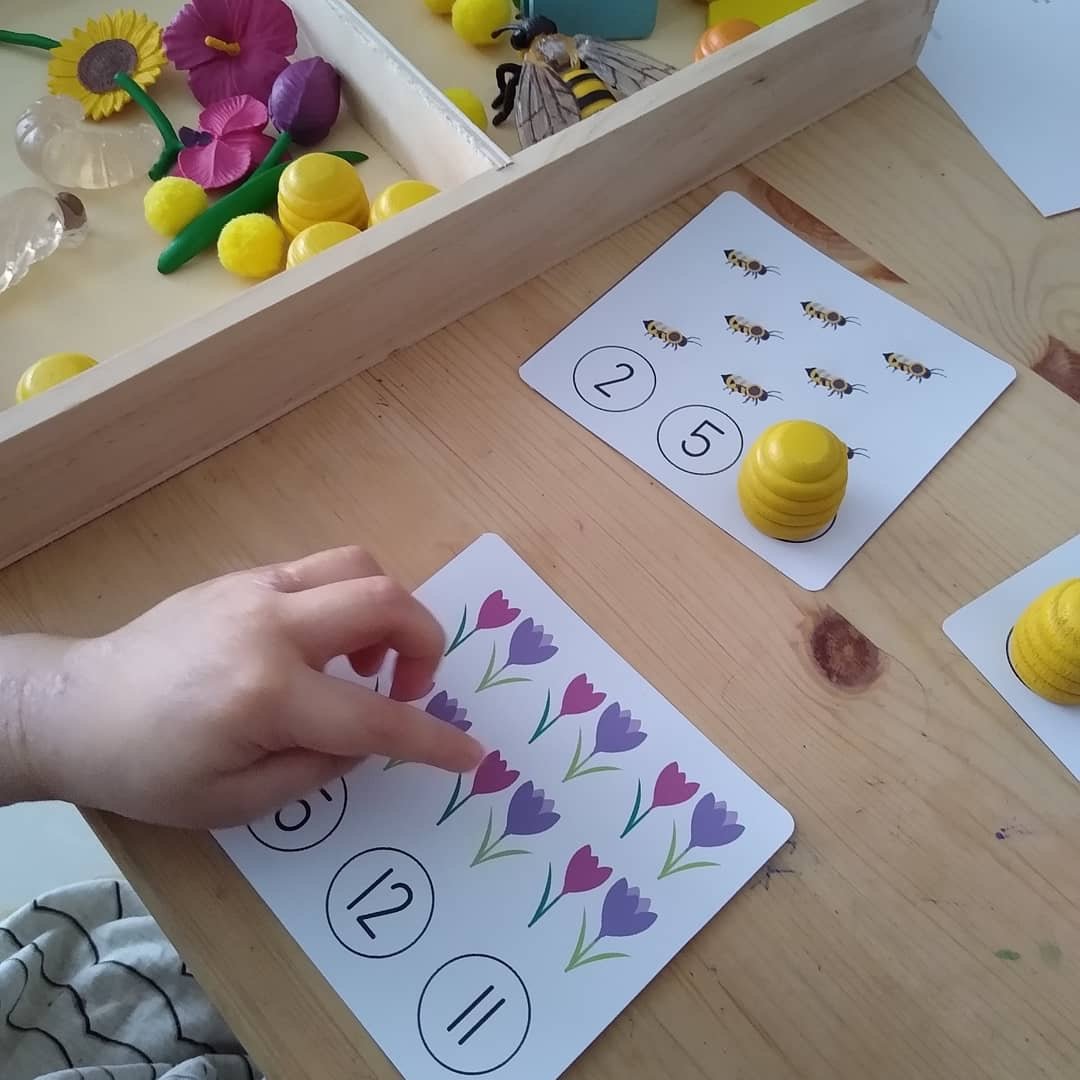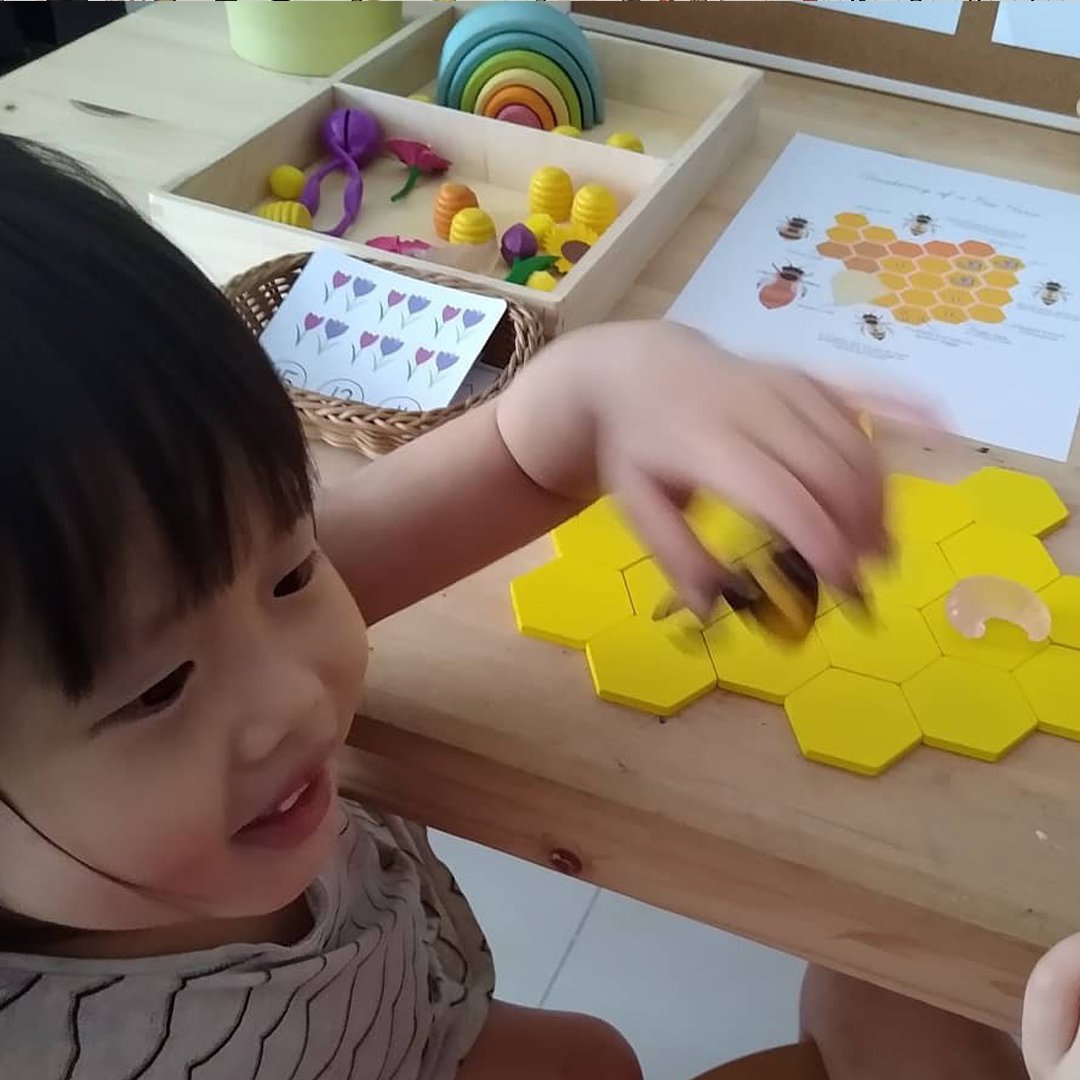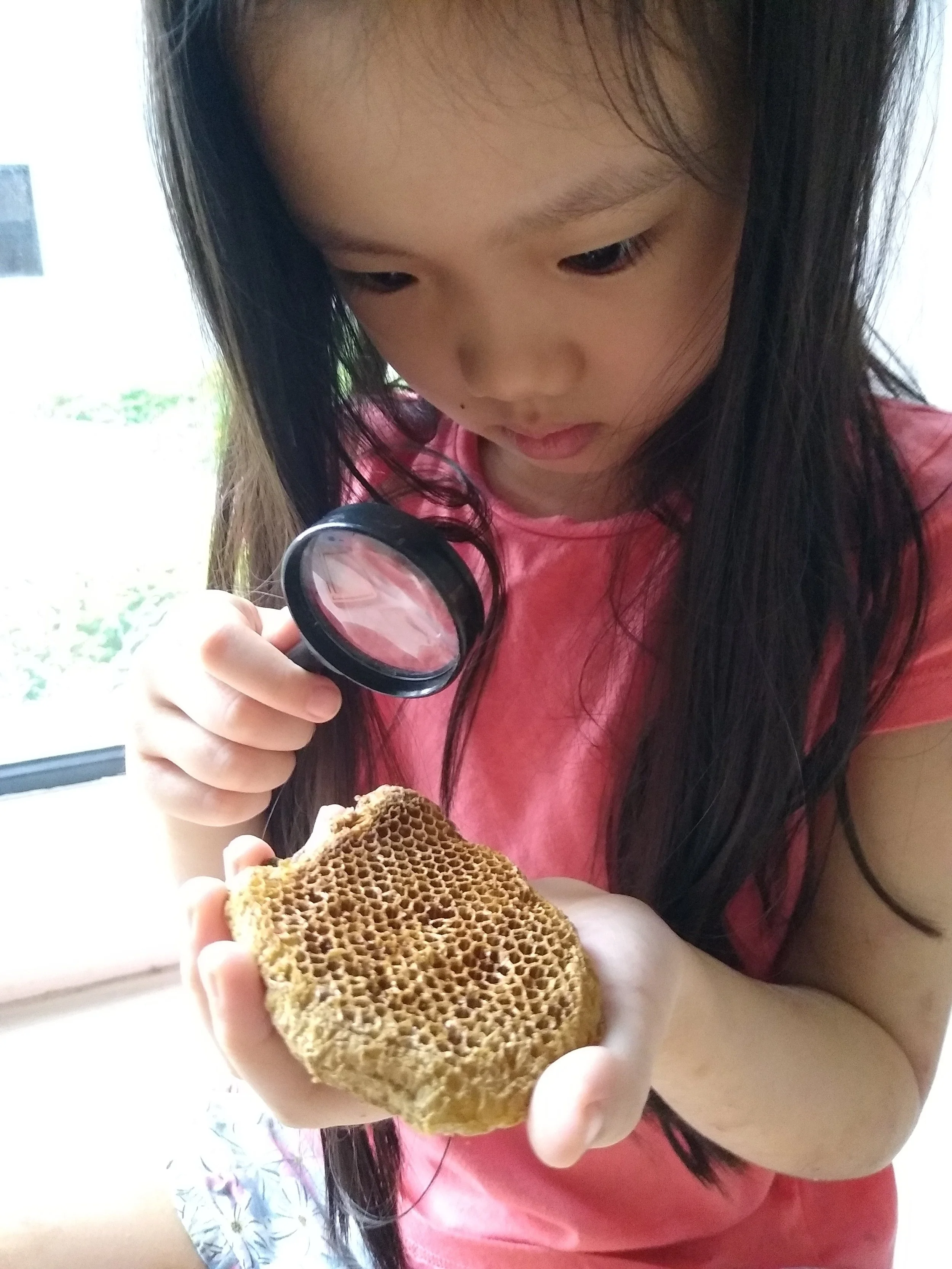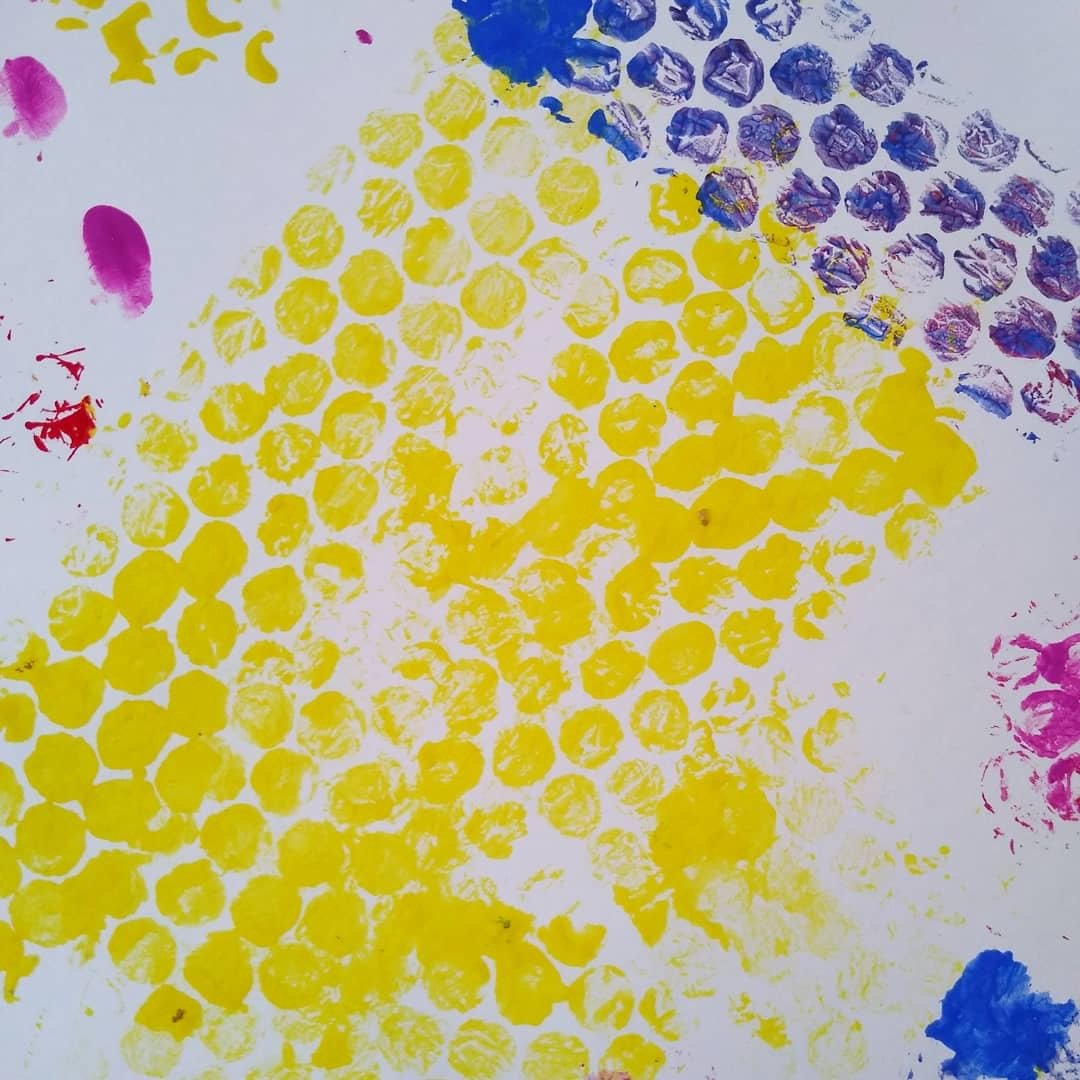Honeybees Unit Study
One of our favourite themes in our homeschool has to be honeybees, because who doesn’t love bees, right? We’ve been studying these magnificent creatures since Kara was 5, we had just started homeschooling her and it’s been featured in so many aspects of our learning. Unit studies, again are meant to encompass all different areas of learning & she’s inspired me to create all these wonderful studies! Our Honeybees Nature Unit Study has been passed down to her sister who is now 5!
I’ve talked about creating the atmosphere and setting up invitations to learn! It can be as simple or as elaborate as you make it. Here’s how did our Honeybees Unit Study last year, when my youngest was 4. I started by printing out the pack: Honeybees Nature Unit Study Everything is organised for you, all you need to do is pick and choose the activities that are suited to each student’s level. Add a touch of creativity and you’re all set to go! Gather all books, supplies, materials and you’re good to go!
I start of by making a sensory tray and added in loose parts for a fun hands-on learning experience! Essentially, I just dumped every honeybee related toy I could think of into our tray. A sensory tray / bin is meant to give children a chance to explore and engage with most or all of their senses.
Then I added tools for to improve fine motor skill - (this helps with handwriting and letter formation later on because it strengthen muscles in your fingers) I also added yellow pom-poms to represent pollen. She loved transferring the “pollen” into the hive to make honey.
She wanted to use wooden beehives as her markers instead of the usual wooden clips. You could also use dot markers, counters or print them out as a worksheet if that’s your thing - there’s really no wrong way of doing it!
In the early years, play is crucial! It is the only way children can use their creativity, develop their imagination, cognitive skills, and ultimately learning. Reading to your children everyday helps you create a special bond and encourages a positive growth environment! It also helps with language and social emotional development. There is a book list of some of our favourite honeybee books. Here, I’m reading The Honeybee by Kristen Hall read aloud to them while they pretend to be queen bees!
This is also another fun literacy activity she did last year. Matching uppercase (mommy) letters to lowercase (baby) letters - is what we call them!
We used our alphabet flashcards from our abc’s 123 early years essentials and she formed the letters Bb with our sand tray.
Of course they also tasted honey, royal jelly and bee propolis! We also found a small honeybee hive that we examined upclose. This year we found an even bigger one that we collected along with many dead bees that we keep in our cabinet of curiosities. Our unit studies are not only interest-led but also create a love of learning that continues even when all of the worksheets used up!
And of course our art projects! Here, we just used bubble wrap to create prints for our beehive. Super easy right? You just need a little imagination to spark wonder and joy.
This year, I’m picking and choosing the activities from all our different units and starting a class. Tuesday was our first class and I noticed my new students struggled to differentiate b’s and d’s so I created a brand new b is for bee… b & d sorting activity for them. You can download yours here for FREE - for a limited time only! I hope this post encourages you to start your very own Honeybees unit study!

